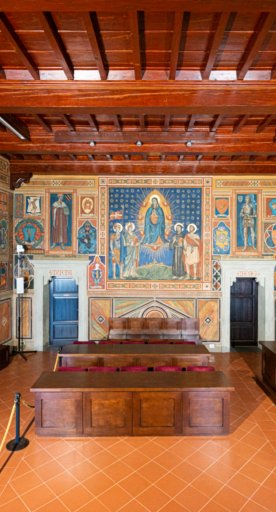
Pisa Area
The land of towers: each so different, each so unique
The territory surrounding the Leaning Tower is vast and varied, but they’re known by everyone thanks to a deeply-felt belonging to this centuries-old province, which is certainly much more than just its capital, Pisa.
The landscape of this typically Tuscan countryside is characterized by rolling hills interspersed with wide plains and important rivers, like the Arno. Here, nature and man have come together to preserve this extraordinary landscape. Indeed, the nature in these parts is home to precious thermal waters and is perfect for relaxing vacations, like in Cascina, San Giuliano and Uliveto; there are beaches for everyone, from Marina di Pisa to Tirrenia, not to mention Calambrone and Marina di Vecchiano; then there’s the evocative, silent countryside, home to Fauglia, Orciano and Lajatico, the latter with its aptly named Teatro del Silenzio, and the unspoilt San Rossore Estate, where the aromas of the pine grove envelope a rich wildlife. This nature has been worked by man over the centuries, its hills dotted with country homes and cypress trees, and is where visitors can find Monte Pisano, crisscrossed by mule trails, terrace and hiking paths.
This area is steeped in strong farming origins: the many agricultural companies around here that produce wine, oil, fruit, wheat and sunflowers produce high-quality products that have ensured that the cuisine of this region is varied and characterized by details that make it unique. One of these excellent delicacies is the celebrated IGP Monti Pisani olive oil. Then there are the wines produced in the vineyards in Terricciola, for example, or the towns along the Colline Pisane Wine Trail, the products from San Miniato, like white truffle and mallegato, a cured meat protected by Slow Food, the seaside honey, the products made using Mucca Pisano cattle and wild boar, and the many recipes passed down for generations and today proudly reinterpreted by a few chefs.
The ability to transform such esteemed ingredients into top-ranking products can also be seen in area’s artisan masters, who still today make their living with their crafts. This is the case in the cities of ceramics like Montopoli and Calcinaia, or the woven baskets made in Buti and the furniture in Cascina and Ponsacco, as well as the leather district comprising Castelfranco, Santa Croce and Santa Maria a Monte, which is well-known for producing hides.
Such skills are best represented in the artworks found in Pisa, a city that’s much more than its piazza dei Miracoli, but whose beauty also includes characteristic squares like piazza delle Vettovaglie and piazza della Pera, museums and its poetic lungarni. Art in this area, a continuum of the entire territory, also includes modern and contemporary pieces: check out Calci, home to the monumental Certosa, which houses the Museum of Natural History, Vicopisano and Pontedera. Equally worth visiting are the villages scattered throughout the countryside, which often surprise visitors with their important museums; some of these towns include Capannoli, Chianni, Lari, Palaia and Peccioli.
There’s a common theme that links all the towns in this territory together and which is the best way to truly learn about the area: the traditional events, town festivals and historic re-enactments, all of which highlight the true heart of the Pisa area.









































